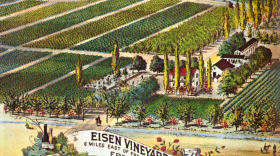From its origins in the High Sierra, all the way to the Tulare Lake, the Kings River is one of the defining features of the landscape of the Central Valley. Today on KVPR’s Central Valley Roots, we explore its history, and its many names.
It was early January 1805 and Spanish Lieutenant Gabriel Moraga was leading an expedition through the east side of the San Joaquin Valley. When his party came across a great river they camped for the night. The next day January 6th was the day Catholics call Epiphany. It's the holiday which celebrates the visit of the Magi to the baby Jesus. Moraga named this river in their honor – El Rio de los Santos Reyes – or the River of the Holy Kings.
Moraga was likely the first person of European descent to see the river. The following year Moraga returned to the river, and a member of his party, Father Pedro Munoz described the landscape in his diary. “The meadows by the river are excellent… well supplied with oaks, alder trees, ash trees, cottonwoods, and willows. The river abounds in beaver and fish. It is a suitable site for a mission, and perhaps also for a presidio.”
Moraga wasn't the first - or the last - to name the river. The Yokuts called the river Wim-mel-che. In 1827, American explorer and trapper Jedediah Smith came to California and he followed the Yokuts tradition, calling the river Wimmelche. In 1844, John C. Fremont explored the valley, and named it The River of the Lake, recognizing it as the principal tributary of Tulare Lake.
Those names didn’t catch on, and eventually El Rio De Los Santos Reyes became Anglicanized as the "Kings River." And grammar nerds note: that’s “Kings” plural, not possessive – because the river wasn’t named for the King of Spain, but rather the Three Kings of the nativity.






